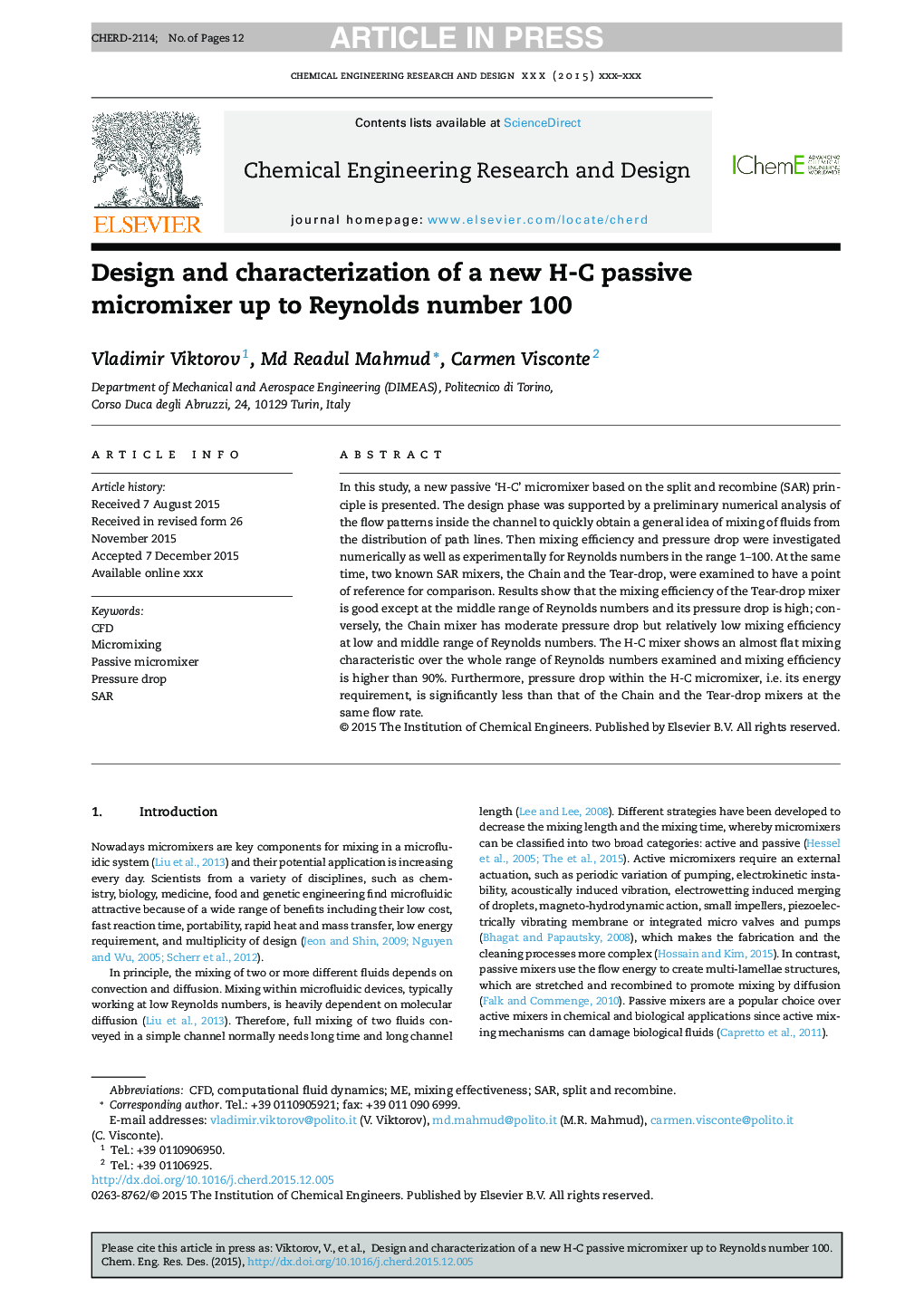| Article ID | Journal | Published Year | Pages | File Type |
|---|---|---|---|---|
| 621134 | Chemical Engineering Research and Design | 2016 | 12 Pages |
Abstract
In this study, a new passive 'H-C' micromixer based on the split and recombine (SAR) principle is presented. The design phase was supported by a preliminary numerical analysis of the flow patterns inside the channel to quickly obtain a general idea of mixing of fluids from the distribution of path lines. Then mixing efficiency and pressure drop were investigated numerically as well as experimentally for Reynolds numbers in the range 1-100. At the same time, two known SAR mixers, the Chain and the Tear-drop, were examined to have a point of reference for comparison. Results show that the mixing efficiency of the Tear-drop mixer is good except at the middle range of Reynolds numbers and its pressure drop is high; conversely, the Chain mixer has moderate pressure drop but relatively low mixing efficiency at low and middle range of Reynolds numbers. The H-C mixer shows an almost flat mixing characteristic over the whole range of Reynolds numbers examined and mixing efficiency is higher than 90%. Furthermore, pressure drop within the H-C micromixer, i.e. its energy requirement, is significantly less than that of the Chain and the Tear-drop mixers at the same flow rate.
Keywords
Related Topics
Physical Sciences and Engineering
Chemical Engineering
Filtration and Separation
Authors
Vladimir Viktorov, Md Readul Mahmud, Carmen Visconte,
